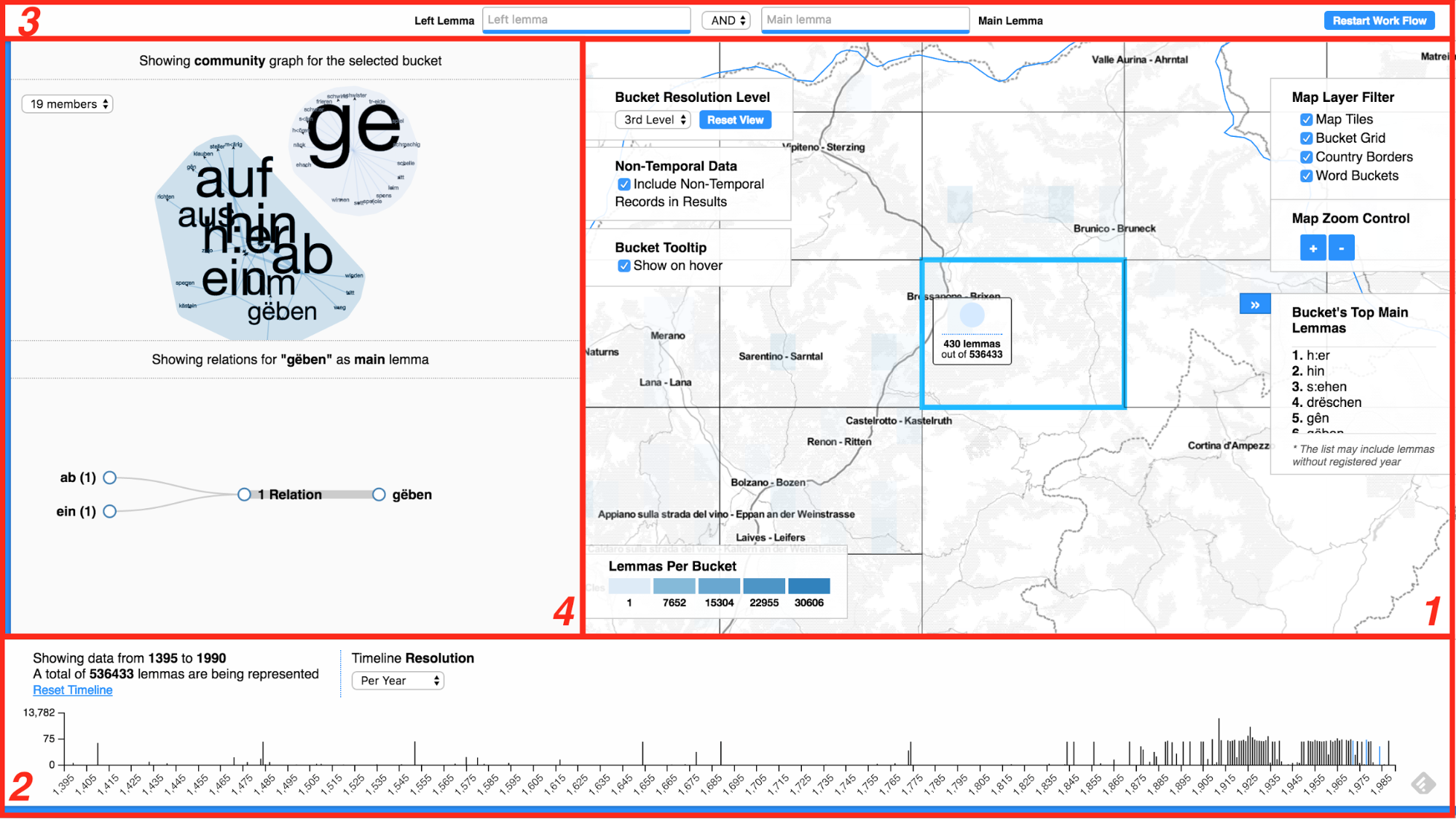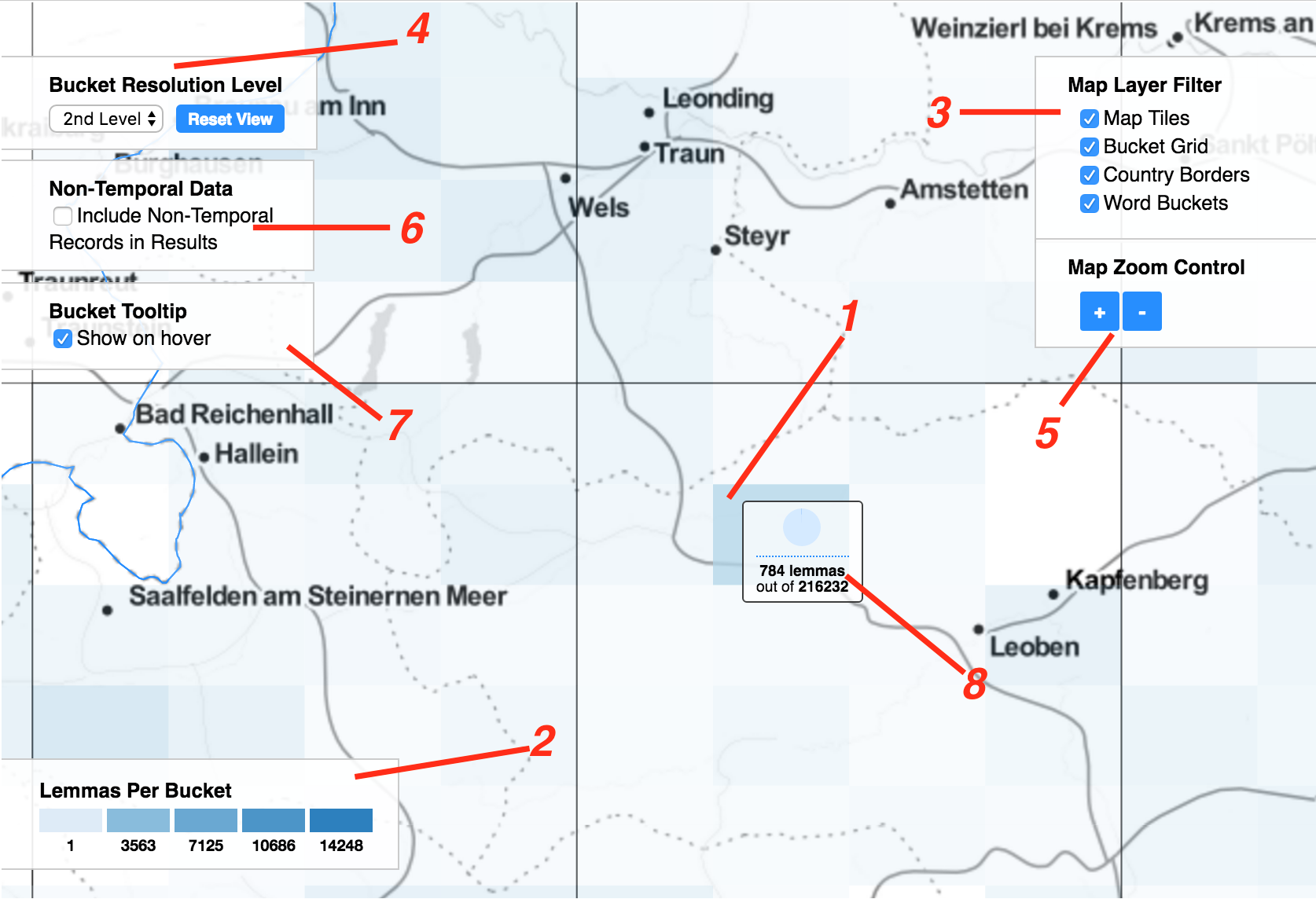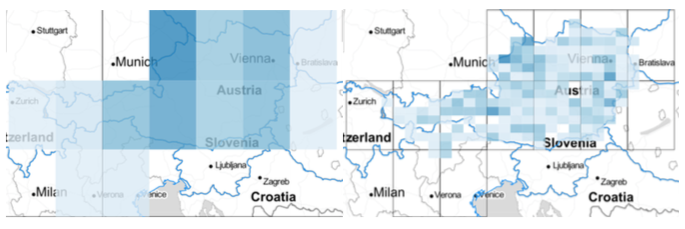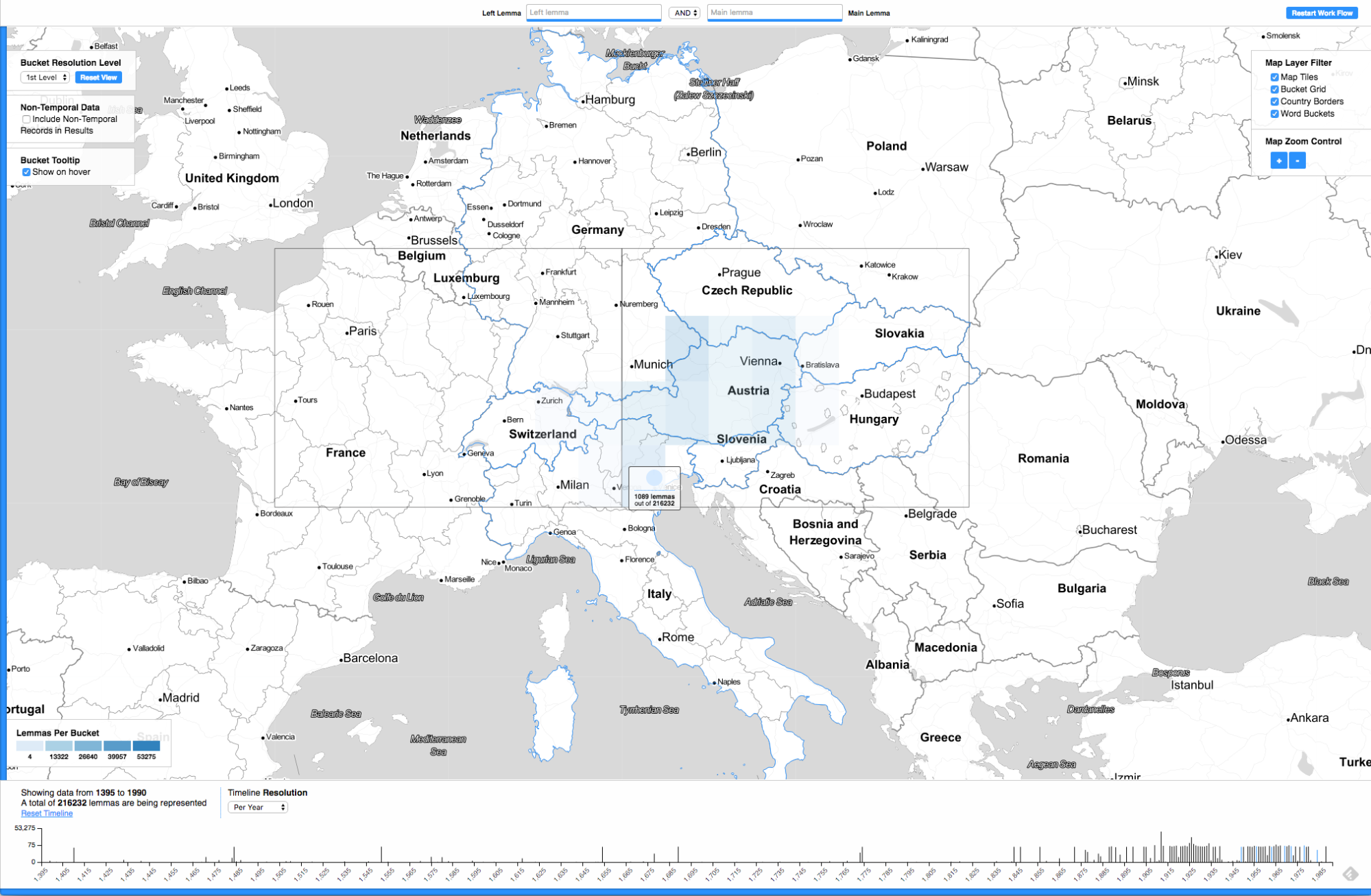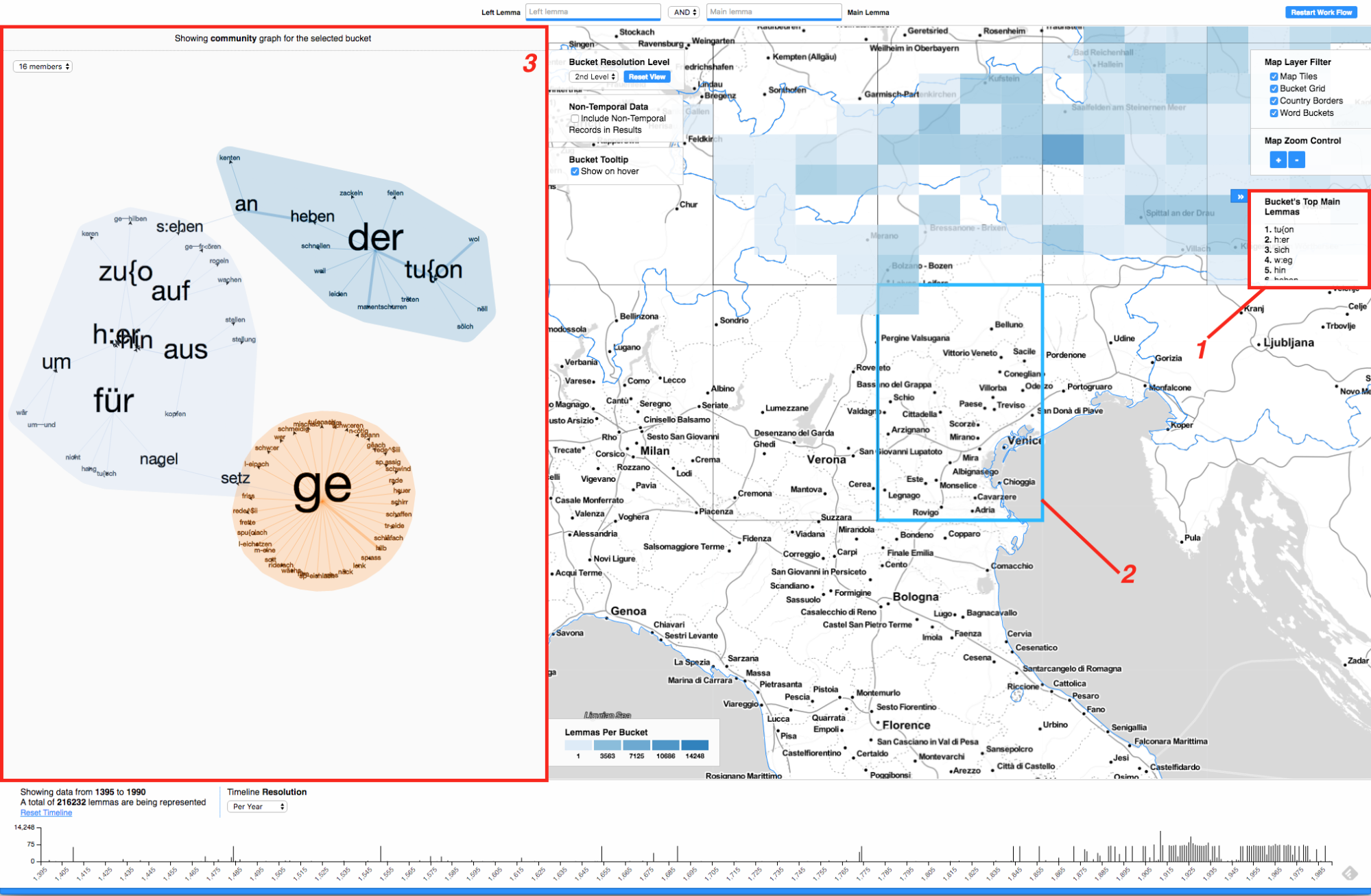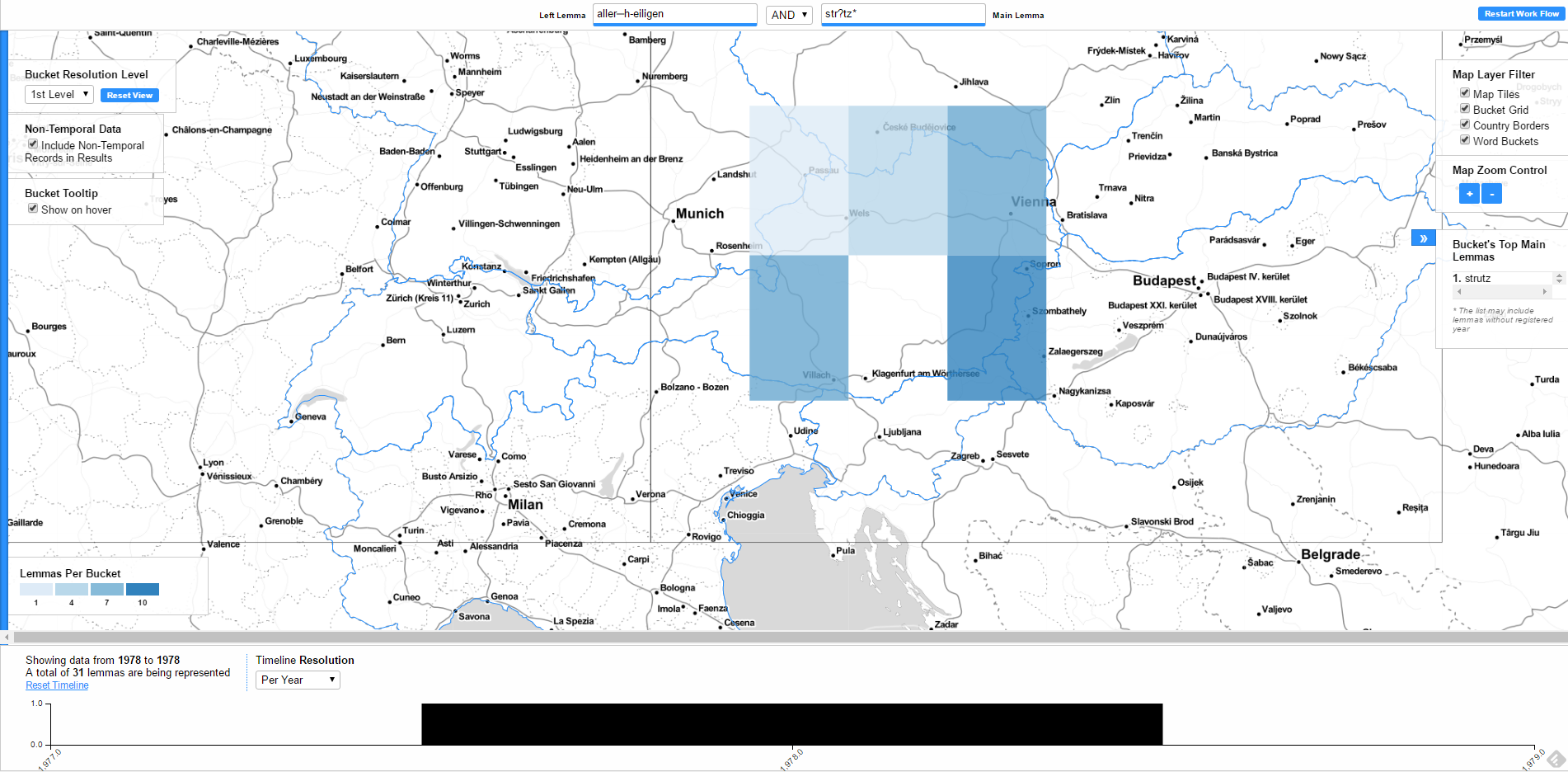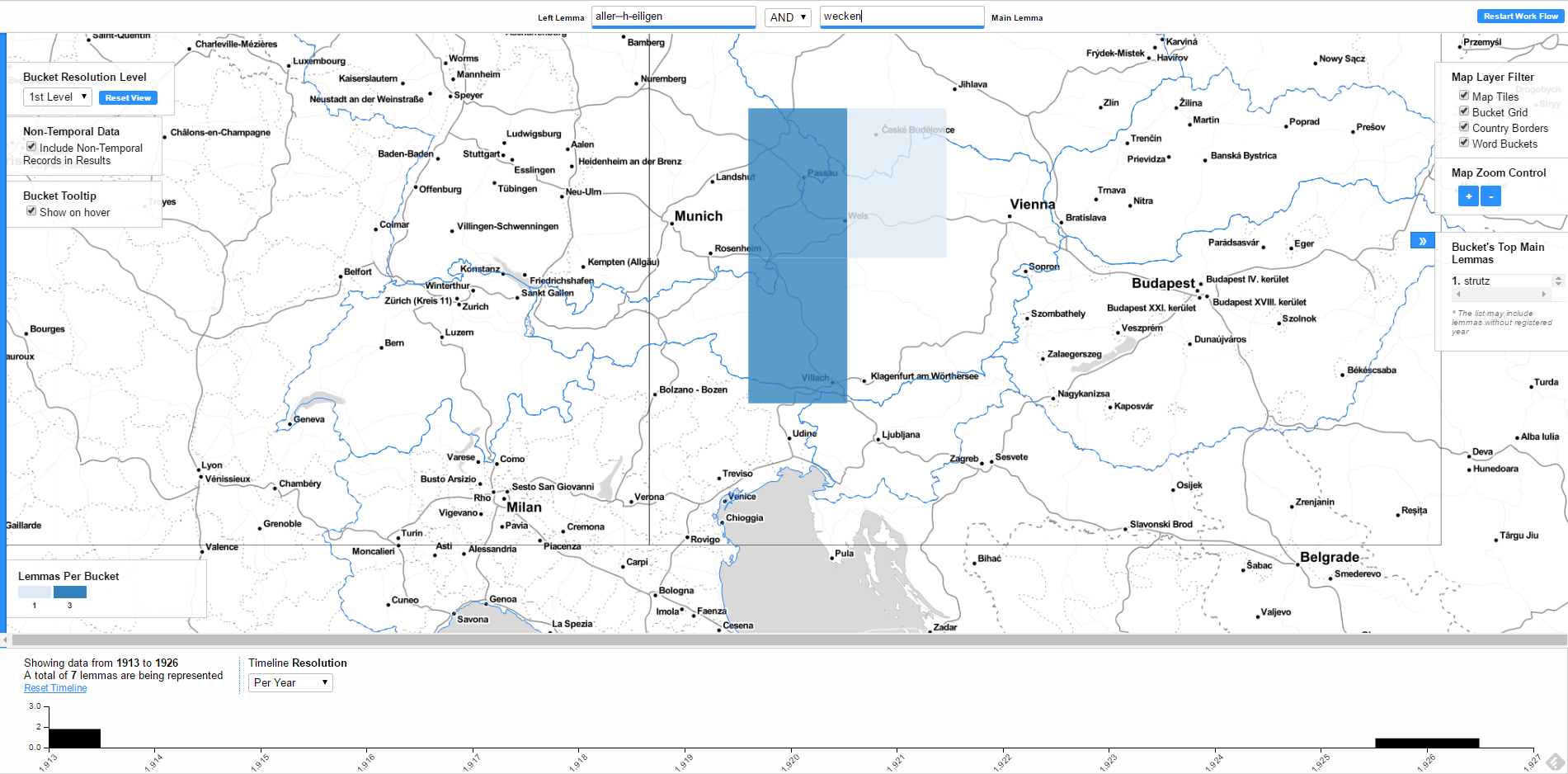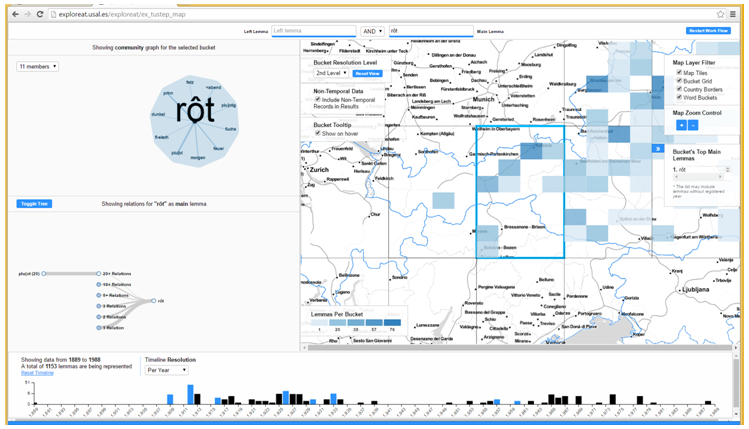The exploreAT! project aims to give insights into the richness of the German language in the Austrian area through a rich and unique collection of dialect words of the Bavarian dialects recorded during the former Austrian-Hungariann Monarchy period and beyond. Originally collected by means of questionnaires, words were noted in handwriting on individual paper slips, covering topics from nature and food to religious festivities, etc. Once digitized, the full database contains around 3.5 million single data entries with an estimated 200,000 headwords, which requires substantial effort if the analysts want to access specific information from the data set. It should also be noted that the data presents a high heterogeneity in terms of its nature and origin (from questionnaires, collectors, scientists, students, spoken language, hand written notes, etc.), which calls for the creation of a homogeneous database containing all of the available information.
Interdisciplinary approaches to data analysis are widely practiced in Digital Humanities (DH). During recent years, much emphasis has been placed on the devising of sustainable digital infrastructures and new and innovative ways of big data exploration in order to exploit and shed light on a multitude of aspects, thus increasing local and global accessibility.
Living in an age that is increasingly dominated by visual impacts and stimuli, the use of novel methods and tools that allow for visual exploration, grouping, analysis and relational demonstrations of different kinds of data have received heightened attention across different fields, including Digital Humanities.
